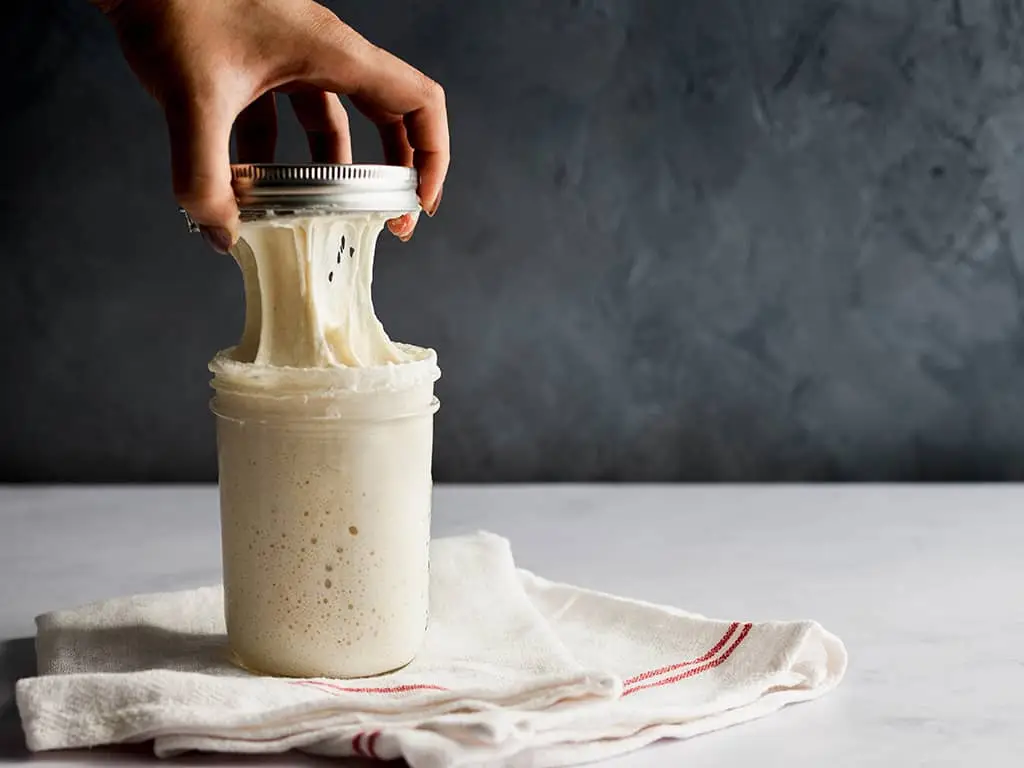We’re letting you know that this post contains sponsored links which Your Savvy Purse receives compensation for, which may impact their order of appearance.
Sourdough bread has a distinct flavor and texture that makes it a favorite for many bakers. While the bread itself can be a bit tricky to master, the foundation of a great sourdough loaf is the starter—a living culture of wild yeast and bacteria. Creating your own sourdough starter from scratch is surprisingly simple, though it requires patience, consistency, and just a few ingredients. In this blog post, we’ll walk you through the steps of making the perfect sourdough starter at home.
What You Need to Make a Sourdough Starter
Before we get started, let’s gather the necessary ingredients and tools. The good news is, you don’t need any fancy equipment!
Ingredients:
- Whole wheat flour (for the first few days, this helps jumpstart the fermentation)
- All-purpose flour (for feeding after the first few days)
- Water (preferably filtered or dechlorinated water at room temperature)
Tools:
- A large glass jar or bowl (about 1-liter capacity)
- A spoon or spatula
- A kitchen scale (optional, but very helpful for accuracy)
- A clean towel or cheesecloth (to cover the jar)
Step-by-Step Guide to Making a Sourdough Starter
Day 1: Mix Your Ingredients
- Prepare the Flour and Water Mixture: In your glass jar or bowl, combine 100 grams of whole wheat flour with 100 grams of room temperature water. Stir thoroughly until the mixture is smooth and free of dry patches. Whole wheat flour is preferred at this stage because it has more nutrients and microorganisms that help jumpstart the fermentation process.
- Cover the Jar: Cover the jar with a clean kitchen towel or cheesecloth to allow airflow, but prevent dust from getting in. A loose-fitting lid can also work, but it’s essential that air circulates to encourage the growth of wild yeast.
- Let It Rest: Leave the jar in a warm spot (ideally between 70°F – 75°F or 21°C – 24°C) for 24 hours. If it’s too cold, the fermentation process will be slower.
Day 2: Check for Signs of Activity
After 24 hours, check the mixture. You might notice a few small bubbles or a slight rise in the mixture. If you don’t see much action yet, don’t worry! It’s common for starters to take a couple of days to get going.
- Feed Your Starter: Discard about half of the mixture (roughly 100 grams) to make space for the new flour and water. Add 100 grams of all-purpose flour and 100 grams of water to the jar. Mix thoroughly and cover it again. This feeding will help build a strong culture.
- Let It Rest: Leave the jar in a warm spot for another 24 hours.
Day 3: Expect More Bubbling
By now, you should begin seeing more active bubbles and signs of fermentation. Your starter might have started to develop a tangy smell, which is a good sign that the wild yeasts and bacteria are thriving.
- Feed Your Starter Again: As before, discard about half of the mixture and feed it with 100 grams of all-purpose flour and 100 grams of water. Mix well and cover.
- Let It Rest: Allow it to rest in a warm spot for another 24 hours.
Day 4-6: Continue the Feeding Routine
By Day 4 or 5, your starter should be visibly active—bubbling up and showing signs of rising. The smell should also be more pronounced. You’ll likely see more bubbles on the surface, and the starter may double in size between feedings.
- Continue to Feed: Keep feeding the starter every 24 hours, discarding half and replenishing with fresh flour and water. At this point, it’s time to switch to all-purpose flour for the feedings, as it will encourage more consistent growth and help the yeast develop further.
- Watch for Full Growth: Around Day 5 or 6, the starter should be bubbly, active, and have doubled in size within 6 to 8 hours of feeding. It should smell slightly sour, but not overly pungent. If your starter is showing these signs, it’s ready to use!
Day 7: Ready to Bake
After about 7 days, your starter should be strong and bubbly enough to bake with. To test if your starter is ready, do the Float Test: Take a small spoonful of the starter and drop it into a glass of water. If it floats, that means it has enough gas and air trapped inside to make a light, airy loaf of sourdough.
Tips for Maintaining Your Sourdough Starter
Now that you’ve got a perfectly bubbly and healthy sourdough starter, it’s important to maintain it properly for ongoing use.
- Feed Regularly: If you plan to bake often, continue to feed your starter every day, following the same discard-and-feed routine. If you’re baking less frequently, you can store your starter in the fridge and feed it once a week. Remember to bring it back to room temperature and feed it twice before using it for baking.
- Adjust the Consistency: If your starter becomes too thick, add a little more water to adjust it. If it’s too runny, add a bit more flour. The consistency should be like a thick pancake batter.
- Keep It Warm: The starter will thrive at warmer temperatures. If your kitchen is cool, consider placing the jar in an oven with just the light on, or wrap it in a towel to keep it warm.
- Make Adjustments for Your Environment: Keep in mind that your environment plays a big role in your starter’s success. The temperature and humidity of your kitchen can impact how fast your starter ferments. Be patient and don’t rush the process.
Conclusion
Creating the perfect sourdough starter from scratch takes time and attention, but with the right ingredients and a little love, it’s an incredibly rewarding process. Once your starter is strong, you can begin using it to bake delicious homemade sourdough bread, pancakes, waffles, and more! Just remember that patience is key—wild yeast takes time to develop. Happy baking!



